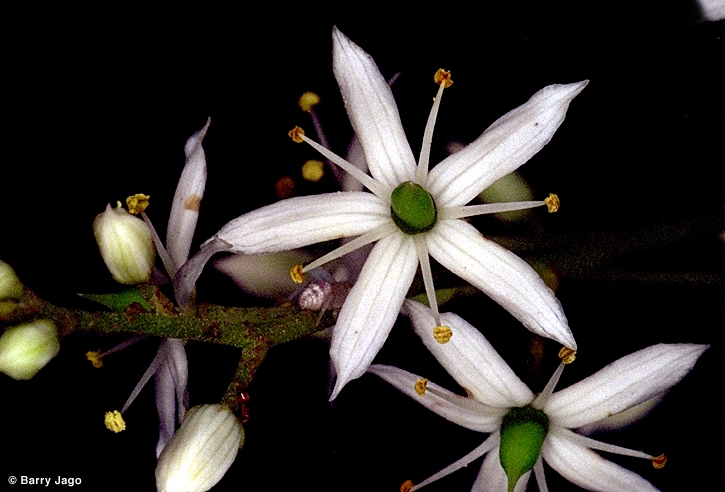Australian Tropical Rainforest Plants - Online edition
Bursaria tenuifolia F.M.Bailey





Bailey, F.M. (1899) The Queensland Flora 1: 72. Type: Barron River, E. Cowley: Shaw Island, Lord Lamington: Northcote, R.C. Burton; Herberton, J.F. Bailey.
Slender Bursaria; Sweet Blackthorn
Seldom exceeding 30 cm dbh. A pine (Pinus spp.), turpentine or mango (Mangifera indica) odour generally apparent in the blaze.
Leaf blades about 35-95 x 9-25 mm, much paler on the underside. Terminal buds and young shoots densely clothed in short, brownish hairs.
Cotyledons linear. From about the third to tenth leaf stage, leaf axils possess a long spine and a cluster of small leaves. Soon after the tenth leaf stage spines are absent. Seed germination time 27 days.
Endemic to Queensland, occurs in CYP, NEQ and CEQ. Altitudinal range from sea level to 1000 m. Usually grows in open forest but also found in monsoon forest and on rain forest margins.
Not commonly cultivated but it has a place in gardens because of the masses of white flowers which can cover the plant.





